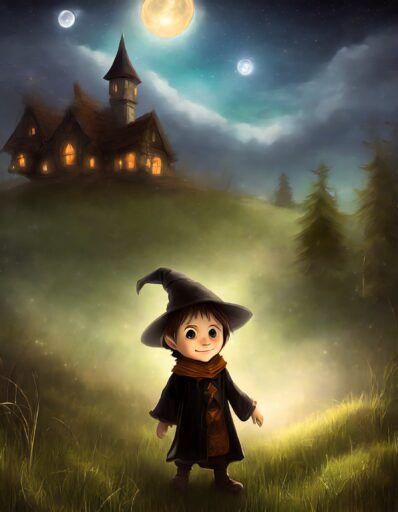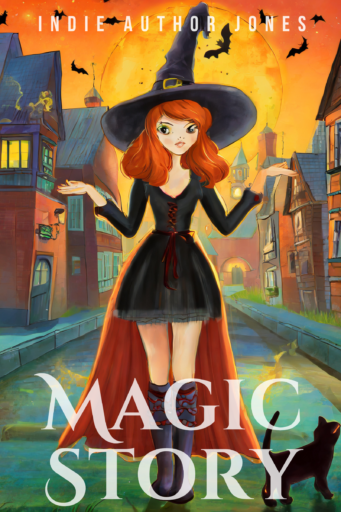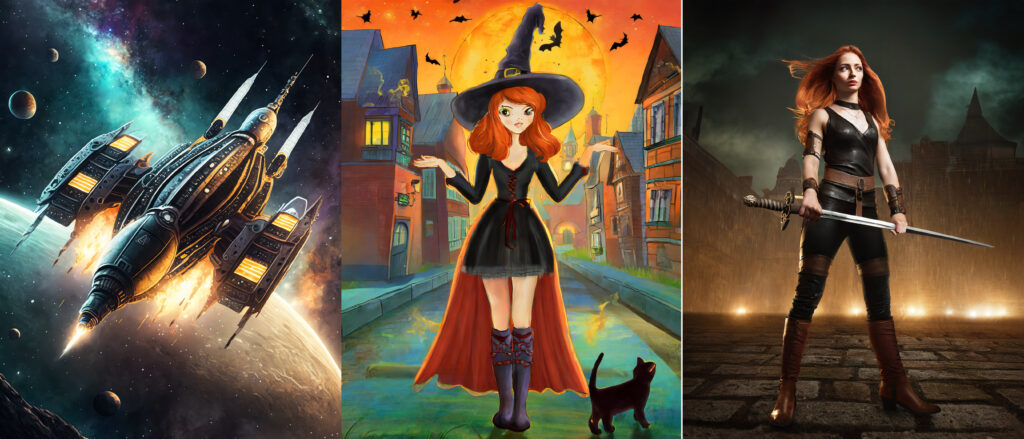
Adobe announced a new version of its Firefly image generation tool today at the Adobe Max 2023 conference.
Adobe Firefly was already the best option for authors looking for AI-generated covers because its AI was only trained on fully-licensed images, the images were licensed for commercial use — and Adobe pays artists. In fact, Adobe sent out the first payment to artists for using their art for AI training on Sept. 13. In fact, Adobe was so confident in the legal aspects of its AI generation tool that it announced it would indemnify business users against any potential legal risks. You can read more about that in my previous article here.
Plus, the Firefly model is built into Adobe Express, Adobe’s answer to Canva, making it even easier for authors to easily create book covers. Adobe offers free plans for both, with a limited number of AI images every month. Paid plans start at $5 a month for Firely and $10 a month for Adobe Express, which includes AI image generation.
The downside to Firefly was that the image quality sucked. Adobe is a year behind companies like Midjourney and Dall-E maker OpenAI. Also, Adobe Express is not as user-friendly as Canva and Adobe nickel-and-dimes users when it comes to fonts and graphical elements and effects.
Today, Adobe addressed one of those issues — Firefly’s image quality. Adobe released Firefly 2 at its Adobe Max conference today. It is already available to users of both the Adobe Firefly standalone app and of Adobe Express and is also integrated into Photoshop and Illustrator. There are also other aspects of today’s announcement of interest to designers, such as AI-generated vector graphics.
The Firefly discussion starts about 18 minutes into the video below:

Firefly has already been used to create 3 billion images, said David Wadhwani, Adobe’s president for digital media, in his presentation today. A billion of those images were created in just this past month.
“It’s by far the fastest we’ve seen any technology we’ve released adopted by all of you,” he told the audience.
So how good is it?
I ran some comparisons with images I created with the first version of Firefly in the past couple of months.
First, here are images for the prompt “spaceship battle in space, high resolution, intricate book cover illustration, black space background, dramatic lighting, beautiful image, awesome composition.” Click on the image to see it in full resolution.

And here is the previous version of the same prompt:

Here is the Firefly 2 image for the prompt “shiny fantasy creature, intricate design, book cover illustration, magical landscape background, wide angle”:

Here’s the old one:
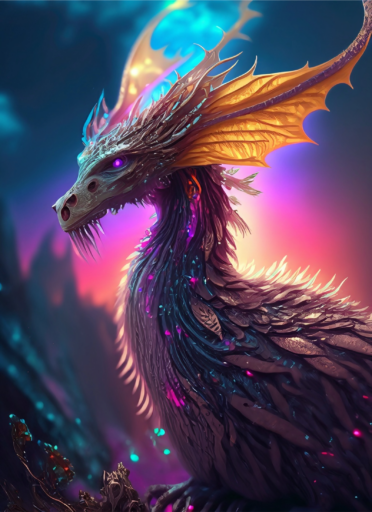
So the new model is sleeker and cleaner. But the big test is faces. The old version of Firefly was unable to do faces and hands. It was really creepy.
I tried hard in the past to get a usable face out of the model. Here’s the best I was able to get for the prompt “magical cute witch in fantasy landscape, wide angle view, child’s fantasy book cover illustration, high definition, dramatic lighting”:
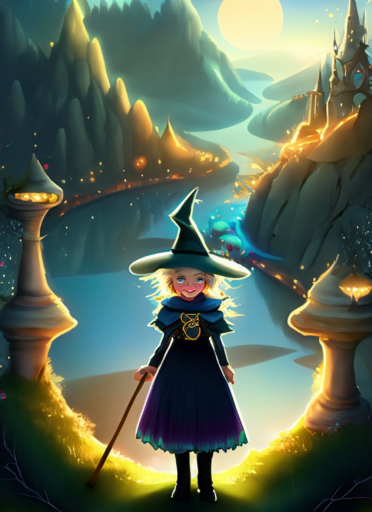
Here are the images that Firefly 2 generates. Here I’m showing you the first three images that Firefly created — no regenerating, no picking and choosing to find the best one. Click on the image for the full-scale view.
Urban fantasy and romance illustrations
In the past, I haven’t used Firefly to generate book covers that featured human faces because the quality was so bad. That made the tool a poor choice for people who wrote fantasy and paranormal romance, unless they were looking for more graphically-oriented or abstract illustrations.
But as you could see from the cartoony images above, it’s gotten better. You can even generate images that look like photographs.
Here’s a prompt: “Beautiful female warrior with sword, dramatic lighting, urban fantasy book cover illustration, dystopian city background at night, highly realistic, detailed, wide angle, flowing hair, leather pants, leather boots.” I added in the part about the boots to get a full-figure image, something suitable for a book cover. I selected the “photo” option in the “portrait” orientation.
Here’s the first image it generated:
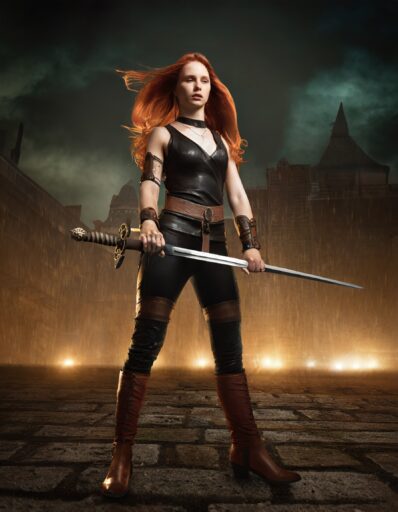
It’s still not as good as Midjourney, and the woman still has the wrong number of fingers, but it’s getting there. Plus, we’ve got generative fill — just click on the “edit” button, select an area to fix, and Firefly will generate variations.
For example, I used generative fill in the image above to change her face and hands:
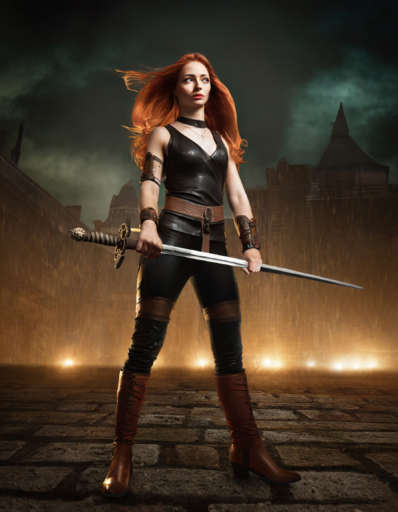
Here’s Firefly 2’s take on the prompt “handsome brooding blonde male model with unbuttoned shirt, long hair, in hiking boots, in forest at night, moon overhead, large gray wolf in background, dramatic lighting”:

Let’s do one more. Here’s Firefly 2 with the prompt “Beautiful female witch illustration, twenties, red hair, cozy small town background, black cat, urban fantasy book cover, highly detailed, dramatic lighting, bright bold colors, pointy boots, wide angle”:
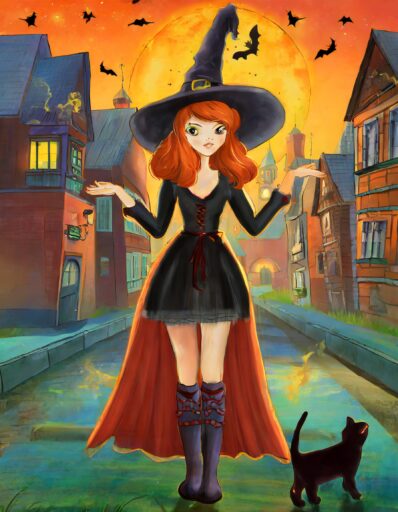
For more prompt ideas and image inspiration, check out the Firefly Gallery.
Professional artists and cover designers will probably be using Photoshop or Illustrator to create book cover images, which will give them all the features offered by Adobe Firefly, as well as the ability to change parts of the image, the ability to zoom out, and all of Photoshop’s existing tools and features, many of which are also being augmented by AI.
I personally will be using Firefly to generate images then Canva to create the book covers or other assets that we use here at MetaStellar. For example, here’s the red-haired witch illustration used to create a book cover with Canva. The title text font is Cinzel Decorative and the author name is in Bebas Neue. Click on the image to see it in full resolution.
At the conference, Adobe demonstrated a few ways that artists can use these features. The company said that, based on its prior experience with the history of Photoshop, these new tools will create more work for artists, not less, and increase the demand for images.
But Adobe Firefly by itself is cheap enough, and easy enough to use, that writers looking for basic home-made covers for short stories, or for their early books, or for inspiration images — or for marketing images and social media and blog posts — can generate them for free or low cost without worrying about legal and ethical issues.
They still won’t be able to copyright the images they generate unless they do additional manual editing work, but covers that use stock images don’t have the copyrights to those images either, and the same stock images often show up on different book covers, even those by major publishers making books for big-name authors.
MetaStellar editor and publisher Maria Korolov is a science fiction novelist, writing stories set in a future virtual world. And, during the day, she is an award-winning freelance technology journalist who covers artificial intelligence, cybersecurity and enterprise virtual reality. See her Amazon author page here and follow her on Twitter, Facebook, or LinkedIn, and check out her latest videos on the Maria Korolov YouTube channel. Email her at [email protected]. She is also the editor and publisher of Hypergrid Business, one of the top global sites covering virtual reality.

